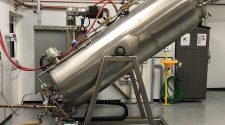anchor
Members of NCARB’s Future Collaborative include leading architects and experts in emerging technologies.
In the span of 25 years, the profession has transitioned from paper-and-pencil drafting to Building Information Modeling (BIM). While no one technology will completely alter the architect’s role,…three technologies will have the greatest impact on the profession: generative design, computational analysis, and automation.
— NCARB
Established in 2017, NCARB’s Futures Collaborative seeks to explore challenges and opportunities facing the architecture profession. It is composed of leading architects, experts in emerging technologies, and architectural licensing board members. For the past two years, the collaborative has been exploring how emerging trends in technology and practice will influence the future of licensure and the architect’s role.
“Code compliance—previously considered one of the most important roles of an architect—is also being automated through BIM,” NCARB writes, concluding that “technology has the potential to fully automate functions related to health and safety.” This could result in the architects of the future focusing more time on aspects of welfare.
In the end, NCARB still needs to determine what “an architecture license of the future” will look like and what responsibilities will accompany it. The Futures Collaborative is still in the midst of its research phase. After further progress, the group will recommend next steps that are sure to impact “everything from architectural education, experience, and examination to the organization’s policies and standards.”
















